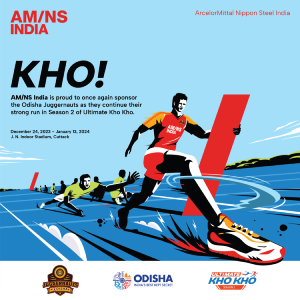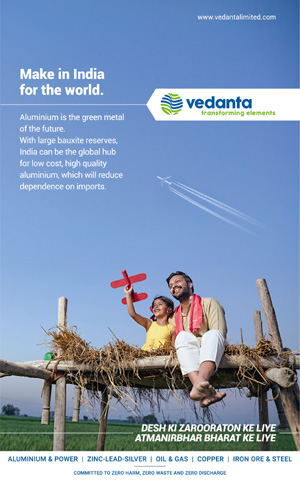Nuakhai Juhar
By Er Taraprasad Mishra
Jajpur, Sept 10 : Nuakhai is a regional public holiday in the Indian state of Odisha on the day after the Ganesh Chaturthi festival. This is the panchami tithi (fifth day) of the lunar fortnight of the month of Bhadrapada or Bhadraba. This means it falls in either August or September in the western calendar.
This is an agricultural festival of the people of Odisha. The festival is observed across the state, but it is particularly important in the life and culture of Western Odisha. It is also celebrated in the neighbouring area of Simdega in Jharkhand, where Odia culture is predominant. .
According to the calendar it is observed on panchami tithi (the fifth day) of the lunar fortnight of the month of Bhadrab (August–September), the day after the Ganesh Chaturthi festival. This is the most important social festival of Western Odisha and adjoining areas of Simdegain Jharkhand, where Odia culture is much predominant. Nuakhai is also called ‘Nuakhai Parab’ or ‘Nuakahi Bhetghat’.
The word ‘nua’ means ‘new’ and ‘khai’ means ‘food’, so the name means the farmers are in possession of the newly harvested rice. The festival is seen as a new ray of hope. It has a big significance for farmers and the agricultural community.
The festival celebrated at a particular time of the day which is called lagan. Arsaa pithaa is prepared to celebrate this festival. When the lagan comes, the people first remember their village god or goddess and then have their nua. The date of the festival was not fixed in old times but nowadays date of the festival is decided in advance by the main priest of the community according to the Hindu calendar. People celebrate the festival on previously set date whether crops are ripened or not. The date of Nuakhai is fixed since 1991 on Bhadraba Sukla Panchami Thithi. Currently people worship Goddess Laxmi on the day of Nuakhai.
People wear new and traditional attires. Elders of the family first offer Nua to the deity and later distribute it among the family members. All family members take blessings from the elders for happiness and prosperity in their life. People greet their relatives and friends in the afternoon.
They sing and perform their traditional Sambalpuri dances like Rasakeli, Dalkhai, Maelajada, Sajani and more. People who are migrated to other states of India also celebrate Nuakhai with same traditional values and fascination. Nuakhai festival is a symbol of Sambalpuri culture and it reminds people of the Odisha the importance of agriculture in one’s life.
Although it has lost its significance over the centuries, oral tradition of this festival dates back to 12th century A.D. when this festival was celebrated by Chauvan Raja Ramai Deo at Patanagarh which is currently known as Bolangir district of Odisha.
The king knew the relevance of agriculture for the economic development of the state and hence the celebration of Nuakhai festival promoted the agrarian way of life in the Western Odisha region instead of the previously practiced hunting and gathering.
Nuakhai Festival gives the present society a great message of the relevance of agriculture in the economic progress of the country and the role of farmers in the process of nation building in those days and also in the present days. Hence, the development of farmers should be the key to the development of nation.
Nuakhai celebration starts with the preparation for the festival almost two weeks before the festival. Nuakhai is understood to have nine colours and as a consequence, nine sets of rituals are followed as a prelude to the actual day of celebration starting from Behrana to Nuakhai and all culminating in Juhar Bhet.
In a sequential manner these nine colours include: Beheren (announcement of a meeting to set the date), Lagna dekha (setting the exact date for partaking of new rice) , Daka haka (invitation), Saphasutura and lipa-puchha (cleanliness), Kina bika (purchasing), Nua dhan khuja (looking for the new crop), Bali paka (final resolve for Nuakhai by taking Prasad (the offering) to the deity), Nuakhai (eating the new crop as Prasad after offering it to the deity, followed by dancing and singing), Juhar bhet (respect to elders & gift transfers).
The nuakhai juhar, which is the exchange of greetings with friends, well-wishers, and relatives symbolizes unity. This is an occasion for people to lay their differences and start relationships afresh. In the evening of Nuakhai, people meet one another, exchanging greeting seeking elder’s blessings for long life, happiness, and prosperity.
Even the partitioned brothers celebrate the festival under one roof. This shows the kind of unity, fraternity and bonding the festival promotes in the society along with its agricultural relevance. On the occasion, folk songs and dances are organized displaying local culture, tradition and various shades of the society.
Everybody comes to know that divine will now governs Nuakhai and no one can stop it from being observed. The ritual is offered first at the temple of the reigning deity of the area or to the village deity. Afterward, they worship in their respective home and offer rituals to the domestic deity along with Laksmi, the deity of wealth as per the Hindu Great Tradition.
In other words, during the stipulated time period, as fixed previously by the pundits, the households also make offerings to their respective presiding deities in their homes. On this occasion, people wear new clothes. It is a tradition that after offering the nua to the presiding deity, the eldest member of the family distributes nua to other members of the family.
After taking the nua, all the junior members of the family offers their unfathomable regards to their elders. Thereafter, follows the nuakhai juhar i.e. exchange of greetings with friends, wellwishers and relatives as well. This symbolizes unity. This is the occasion when people lay their differences to rest and start relationships afresh.
Towards the evening people meet one another exchanging greetings. All differences are discarded and elders are wished nuakhai juhar. On the other hand, the elders bless their juniors and wish them long life, happiness and prosperity.
Even the partitioned brothers celebrate the festival under one roof. In the evening, folk dances and songs are organized in different parts of west Orissa. People dance their way to the foot tapping rasarkeli, dalkhai, maelajada, chutkuchuta, sajani, nachnia and bajnia beats and tunes. Nuakhai has a rich and glorious tradition of its own.
The social aspect of the institution is traditionally manifested by three important aspects. These are adhia, bebhar and bhar. Our ancestors have recognized these practices so as to ensure that everyone in the traditional self-sufficient village community has the barest means required to
Everybody comes to know that divine will now governs Nuakhai and no one can stop it from being observed. The ritual is offered first at the temple of the reigning deity of the area or to the village deity. Afterward, they worship in their respective home and offer rituals to the domestic deity along with Laksmi, the deity of wealth as per the Hindu Great Tradition.
In other words, during the stipulated time period, as fixed previously by the pundits, the households also make offerings to their respective presiding deities in their homes. On this occasion, people wear new clothes. It is a tradition that after offering the nua to the presiding deity, the eldest member of the family distributes nua to other members of the family.
After taking the nua, all the junior members of the family offers their unfathomable regards to their elders. Thereafter, follows the nuakhai juhar i.e. exchange of greetings with friends, wellwishers and relatives as well. This symbolizes unity.
This is the occasion when people lay their differences to rest and start relationships afresh. Towards the evening people meet one another exchanging greetings. All differences are discarded and elders are wished nuakhai juhar.
On the other hand, the elders bless their juniors and wish them long life, happiness and prosperity. Even the partitioned brothers celebrate the festival under one roof. In the evening, folk dances and songs are organized in different parts of west Orissa.
People dance their way to the foot tapping rasarkeli, dalkhai, maelajada, chutkuchuta, sajani, nachnia and bajnia beats and tunes. Nuakhai has a rich and glorious tradition of its own. The social aspect of the institution is traditionally manifested by three important aspects.
These are adhia, bebhar and bhar. Our ancestors have recognized these practices so as to ensure that everyone in the traditional self-sufficient village community has the barest means required to observe the day in gratefulness to the divine mother for her generosity. It is seen as an affront to her dignity even if one needy or poor household is to be left out of the celebrations because of its indigent circumstance.
Adhia is a provision of basic things to those families of the village whose livelihoods are dependent, not on agriculture, but on their professions as village priests, barbers, washermen, blacksmiths, potters and the like in the traditional jajmani system.
In fact, they are the traditional sevakas or servitors in the village community who are easily the most vulnerable. Consequently, they are provided with adhia for their seva or service to the village community. When all agricultural families of the village construct this occasion by extending their goodwill in this manner, obviously every family in the community is taken care of and nobody is left to feel sad for want of means.
In this sense, this justifies and strengthens the jajmani system in a traditional village community. This is a way to pay homage to the divine mother who validates and rationalizes the traditional village economy based on caste system and unequal distribution of resources. This is a way to include and involve everyone in the traditional hierarchical social structure.
On this principle, when people sink their differences to start a new life on the promise of a new tomorrow consequent upon eating of nua, then it confirms and corroborates the same ageold tradition of exploitation. Of course, this practice of unequal exchange of goods and services is on its last legs.
The second kind of courtesy and kindness is extended in the form of bebhar which is sent to household of friends, equals and neighbours as a sign of goodwill, friendliness and reciprocity of sociability. Bhar, the third form of humanity is offered to the relatives living elsewhere after marriage or under other circumstances. There is no denying the fact that bebhar and bhar are also on the way out steadily these days.
As the festival has achieved national outreach with people form the Western Odisha staying in different parts of the country, a showcase of folk culture, songs and traditions take place through this festival of Nuakhai.
Nuakhai festival is another great festival of the state of Odisha which is known for celebrating 13 festival in 12 months as said popularly in Odia ‘Bara Massa re Teraa Parva’. In this holy and auspicious occasion of Nauakhai a warm wish to everyone and lets pray before Maa Samaleswari, the famous mother goddess of Sambalpur district of Odisha, to offer peace and prosperity to all.
Nuakhai is thought to date back to Vedic times, about 3,000 years ago, when the sages recorded panchayajna, the five important activities in the annual calendar of an agrarian society.
These activities are sitayajna (the tilling of the land), pravapana yajna (the sowing of seeds), pralambana yajna (the initial cutting of crops), khala yajna (the harvesting of grains) and prayayana yajna (the preservation of the produce). Nuakhai evolved out of khala yajna, which involves cutting the first crop and reverently offering it to the mother goddess.






